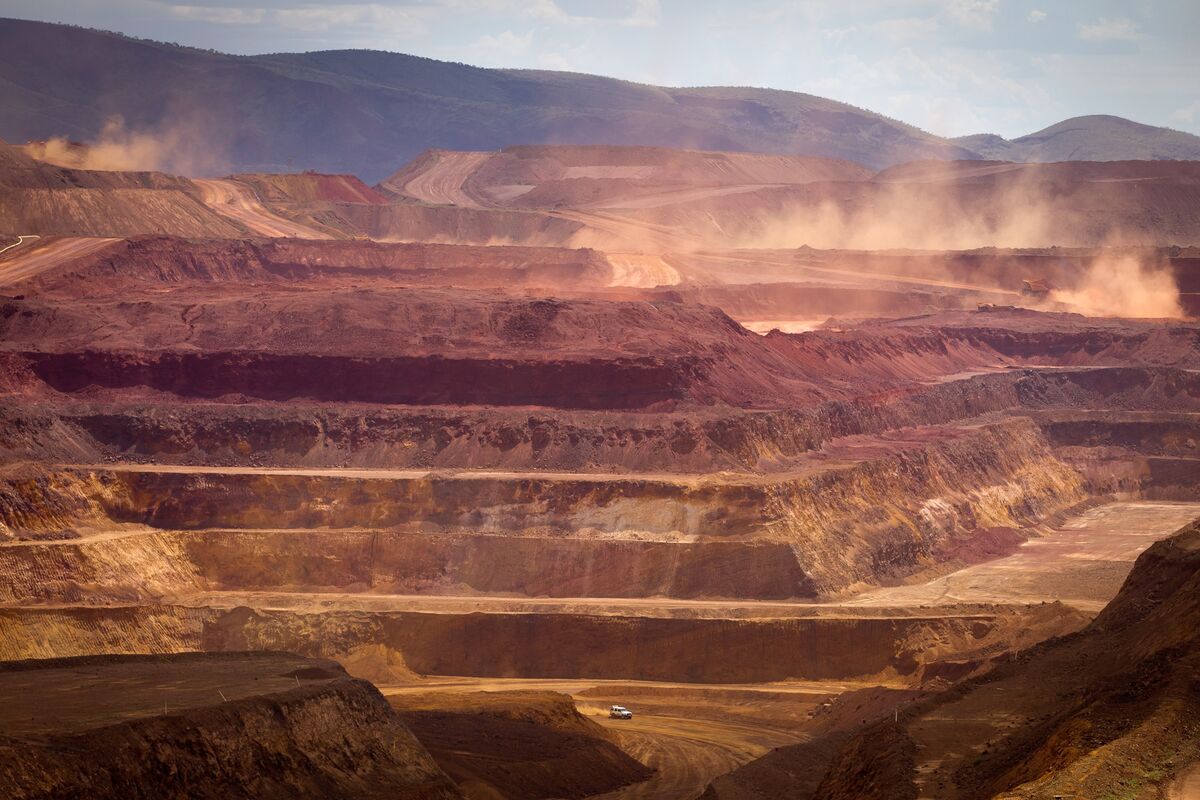Rio Tinto's Response To Claims Of Pilbara Environmental Damage

Table of Contents
Specific Allegations of Environmental Damage in the Pilbara
The Pilbara region, renowned for its biodiversity and unique ecosystems, has faced significant environmental challenges due to large-scale mining activities. Several key areas of concern require detailed examination:
Damage to Native Flora and Fauna
Allegations of biodiversity loss in the Pilbara due to Rio Tinto's operations are widespread. These include:
- Habitat destruction: Large-scale clearing of native vegetation for mining and infrastructure development has resulted in the loss of habitat for numerous plant and animal species. This habitat loss threatens the survival of already vulnerable species.
- Species endangerment: Several endangered species, including the bilby and the black-flanked rock-wallaby, have experienced population declines due to habitat fragmentation and degradation.
- Disruption of migration patterns: Mining activities can disrupt the natural movement patterns of animals, leading to isolation and reduced genetic diversity.
Sources documenting these claims include reports from the Western Australian Department of Biodiversity, Conservation and Attractions, as well as studies published in peer-reviewed scientific journals. The long-term consequences of this biodiversity loss could be significant, impacting the overall health and resilience of the Pilbara ecosystem. The scale of the damage is a major concern for environmentalists and conservation groups.
Water Resource Depletion and Contamination
The Pilbara's arid climate makes water resources particularly precious. Concerns exist regarding:
- Water scarcity: Mining operations require vast quantities of water, potentially depleting already limited groundwater supplies and impacting local ecosystems.
- Water pollution: Discharge from mining activities can contaminate water sources, affecting water quality and potentially harming human and animal health. This includes issues with salinity and heavy metal contamination.
- Impact on Indigenous communities: Indigenous communities in the Pilbara rely heavily on local water resources for traditional purposes. Water depletion and contamination pose significant risks to their livelihoods and cultural practices.
Reports from the Department of Water and Environmental Regulation (DWER) in Western Australia provide data on water usage and water quality in the Pilbara region. Further analysis is needed to assess the cumulative impact of water extraction and contamination from mining operations on the region's vulnerable water resources.
Air Quality Impacts from Mining Operations
Mining operations in the Pilbara generate significant air emissions, raising concerns about:
- Dust pollution: Large-scale earthmoving and transportation activities generate substantial dust, impacting air quality and potentially affecting respiratory health.
- Greenhouse gas emissions: Mining operations contribute to greenhouse gas emissions, exacerbating climate change and its related environmental impacts.
- Other pollutants: Mining activities can release other pollutants into the atmosphere, such as particulate matter and heavy metals.
Data on particulate matter levels and other air pollutants in the Pilbara is available from government agencies and independent monitoring organizations. The long-term health impacts on workers and nearby communities resulting from air pollution require further investigation.
Rio Tinto's Official Response and Actions
Rio Tinto has issued several statements and reports addressing the environmental concerns in the Pilbara.
Public Statements and Press Releases
Rio Tinto's public statements often emphasize their commitment to sustainable mining practices and environmental stewardship. However, the language used in these communications has been subject to criticism, with some characterizing it as defensive rather than fully acknowledging the extent of the environmental damage. A greater degree of transparency and accountability in their communication is required.
Remediation and Mitigation Efforts
Rio Tinto has implemented various remediation and mitigation measures, including:
- Revegetation programs: Efforts to restore native vegetation in areas impacted by mining.
- Water management strategies: Improved water recycling and reduced water consumption in mining operations.
- Dust suppression techniques: Implementation of methods to reduce dust emissions from mining activities.
The effectiveness of these measures needs ongoing independent assessment and evaluation. There is a need for rigorous monitoring and reporting to ensure these efforts are truly mitigating the environmental damage.
Engagement with Indigenous Communities and Stakeholders
Rio Tinto's engagement with Indigenous communities and other stakeholders is a crucial aspect of their response. The extent of their consultation and collaboration needs thorough evaluation. Open dialogue and respectful partnerships are vital to addressing the concerns of local communities.
Independent Investigations and External Scrutiny
The environmental impact of Rio Tinto's Pilbara operations has been subject to several independent investigations:
Government Audits and Regulatory Oversight
Government audits and regulatory oversight play a crucial role in assessing compliance with environmental regulations. The findings of these audits and the effectiveness of regulatory actions need to be publicly scrutinized.
Reports from Environmental NGOs and Advocacy Groups
Environmental NGOs and advocacy groups have published numerous reports criticizing Rio Tinto's response to environmental concerns. These reports often highlight the shortcomings in Rio Tinto's remediation efforts and raise concerns about the long-term environmental impact of its operations. These criticisms provide valuable external perspectives that should be considered. Legal challenges and lawsuits against the company further contribute to this scrutiny.
Conclusion
This article has examined Rio Tinto’s response to allegations of environmental damage in the Pilbara, exploring the specific claims, the company’s official response, and the ongoing scrutiny from various stakeholders. The effectiveness of Rio Tinto’s remediation efforts and their commitment to long-term environmental sustainability in the Pilbara remain key areas of ongoing debate and require continued monitoring. Independent oversight and transparency are crucial to ensuring accountability.
Call to Action: Understanding the complexities surrounding Rio Tinto's environmental impact in the Pilbara requires continued investigation and informed discussion. Stay informed about ongoing developments regarding Rio Tinto’s Pilbara operations and the company’s commitment to environmental responsibility. Follow reputable news sources, environmental organizations, and government reports for updates on this crucial issue. Demand transparency and accountability from Rio Tinto and all mining companies operating in sensitive ecological areas like the Pilbara.

Featured Posts
-
 Removing From Your Watchlist Hulus Movie Departures This Month
May 23, 2025
Removing From Your Watchlist Hulus Movie Departures This Month
May 23, 2025 -
 Cat Deeleys Stunning Phase Eight Midi Skirt Where To Buy It
May 23, 2025
Cat Deeleys Stunning Phase Eight Midi Skirt Where To Buy It
May 23, 2025 -
 Triler Vo Finaleto Na Ln Shpani A Shampion Po Penali Protiv Khrvatska
May 23, 2025
Triler Vo Finaleto Na Ln Shpani A Shampion Po Penali Protiv Khrvatska
May 23, 2025 -
 Whats Leaving Hulu This Month A Full List Of Departing Movies
May 23, 2025
Whats Leaving Hulu This Month A Full List Of Departing Movies
May 23, 2025 -
 Interpreting The Data Big Rig Rock Report 3 12 X101 5
May 23, 2025
Interpreting The Data Big Rig Rock Report 3 12 X101 5
May 23, 2025
Latest Posts
-
 Memorial Day Gas Prices Expected To Be Historically Low
May 23, 2025
Memorial Day Gas Prices Expected To Be Historically Low
May 23, 2025 -
 Expect Low Gas Prices This Memorial Day Weekend
May 23, 2025
Expect Low Gas Prices This Memorial Day Weekend
May 23, 2025 -
 Memorial Day Weekend Gas Prices To Hit Decade Lows
May 23, 2025
Memorial Day Weekend Gas Prices To Hit Decade Lows
May 23, 2025 -
 Memorial Day Weekend Gas Prices Lowest In Decades
May 23, 2025
Memorial Day Weekend Gas Prices Lowest In Decades
May 23, 2025 -
 2025 Memorial Day Weekend Beach Forecast Ocean City Rehoboth Sandy Point
May 23, 2025
2025 Memorial Day Weekend Beach Forecast Ocean City Rehoboth Sandy Point
May 23, 2025
